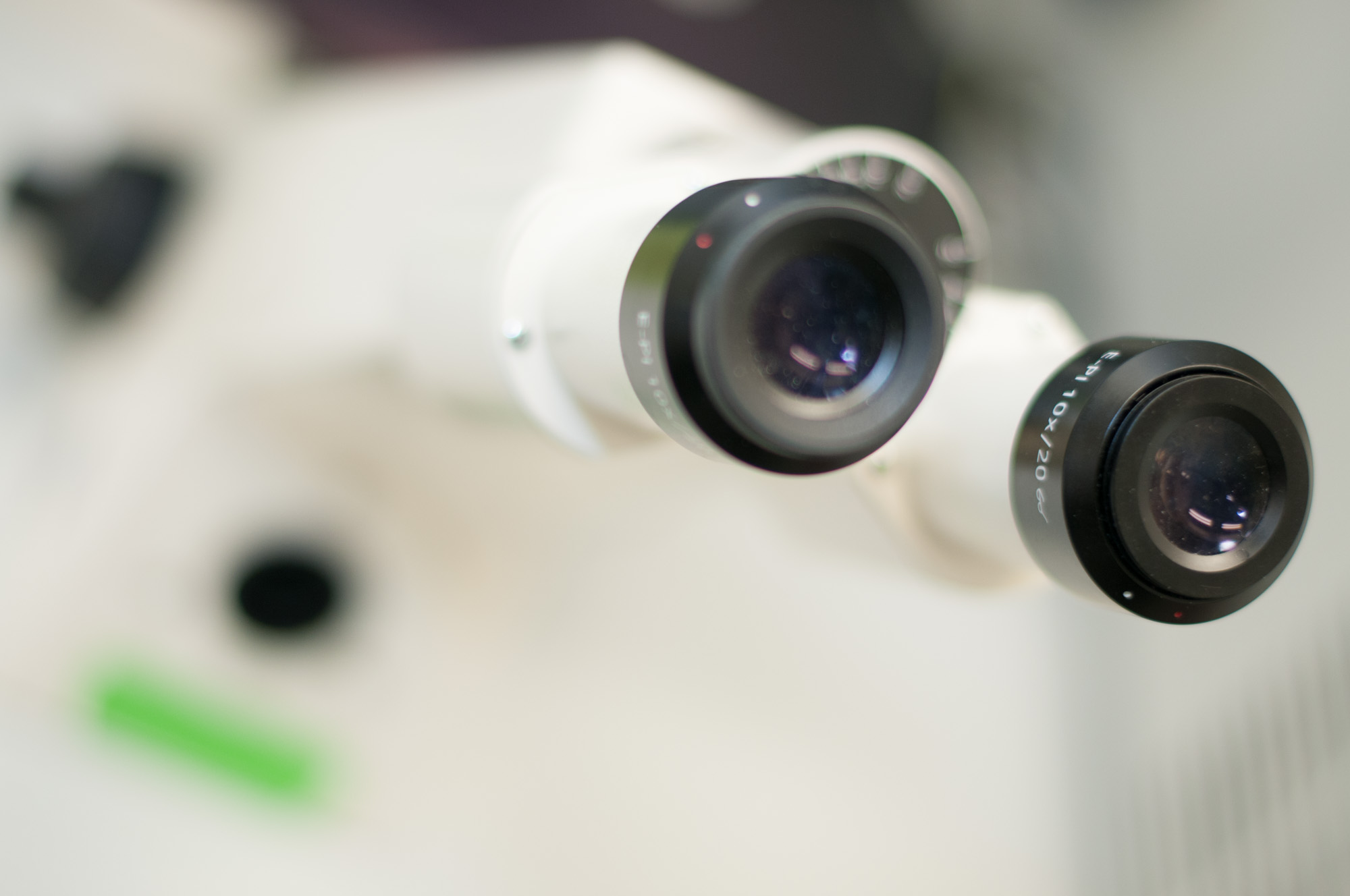
Members
Current members A – Z
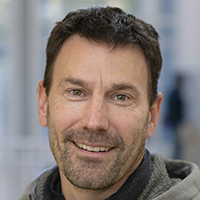
Brockmeier, Ulf
Dr. rer. nat. Ulf Brockmeier
Post-doctoral scientist
Office: MFZ, 2nd floor, room 2.016
Ulf Brockmeier received his diploma in biology in 2002 at University of Bochum. In 2006, he earned his Ph.D. in the field of biotechnology at Research Centre Jülich in the Institute for Molecular Enzyme Technology (IMET). From 2006-2008 he was a postdoctoral fellow at University of Toronto (UofT) in the Department of Biochemistry. After his return to Germany, he worked for the Institute of Physiology at University Hospital Essen focusing on hypoxia and ER stress in cancer cells. In October 2019 he joined the research group “Vascular Neurology, Dementia and Ageing Research” of Prof. Dirk M. Hermann.
Ulf Brockmeier investigates hypoxia-induced stress signaling in neurovascular cells.
Kranz P, Neumann F, Wolf A, Classen F, Pompsch M, Ocklenburg T, Baumann J, Janke K, Baumann M, Goepelt K, Riffkin H, Metzen E, Brockmeier U. PDI is an essential redox-sensitive activator of PERK during the unfolded protein response (UPR). Cell Death Dis. 2017 Aug 10;8(8)
Hussmann M, Janke K, Kranz P, Neumann F, Mersch E, Baumann M, Goepelt K, Brockmeier U, Metzen E. Depletion of the thiol oxidoreductase ERp57 in tumor cells inhibits proliferation and increases sensitivity to ionizing radiation and chemotherapeutics. Oncotarget. 2015 Nov 17;6(36):39247-61.
Jin F, Brockmeier U, Otterbach F, Metzen E. New insight into the SDF-1/CXCR4 axis in a breast carcinoma model: hypoxia-induced endothelial SDF-1 and tumor cell CXCR4 are required for tumor cell intravasation. Mol Cancer Res. 2012 Aug;10(8):1021-31.
Panaretakis T, Kepp O, Brockmeier U, Tesniere A, Bjorklund AC, Chapman DC, Durchschlag M, Joza N, Pierron G, van Endert P, Yuan J, Zitvogel L, Madeo F, Williams DB, Kroemer G. Mechanisms of pre-apoptotic calreticulin exposure in immunogenic cell death. EMBO J. 2009 Mar 4;28(5):578-90

Casas, Ana I
Junior-Prof. Dr. rer. nat. Ana I. Casas
Group leader “Network pharmacology for neurovascular diseases”
Office: IG1, 9th floor, room 9.004
Ana I. Casas received her Bachelor’s degree in Biotechnology in 2013 at the Pablo de Olavide University (Seville, Spain), followed by a Master’s in Neuropsychopharmacology at the Autonomous University of Madrid (Spain) in 2014. She finished her doctoral thesis focused on Network pharmacology as a neuroprotective therapy in ischemic stroke in 2018 with the maximal academic distinction at the University of Maastricht (The Netherlands). Last 2020 she relocated to Germany after being awarded a senior postdoctoral DFG Fellowship at the Department of Neurology (University Hospital Essen). In 2022 she was appointed as Junior Professor at the University Duisburg-Essen and currently acts as group leader of the research group “Network pharmacology for neurovascular diseases”.
Ana I. Casas is focused on the identification of novel therapeutic targets using systems medicine and bioinformatics tools followed by preclinical validation in different neurovascular animal models. Additionally, she follows both network pharmacology and drug repurposing strategies to maximally potentiate clinical translation.
De Meyer S, Langhauser F, Haupeltshofer S, Kleinschnitz C, Ana I Casas. Thromboinflammation in Brain Ischemia: Recent Updates and Future Perspectives Stroke, 2022 Apr 1.
Nogales C, Mamdouh ZM, List M, Markus List, Christina Kiel, Ana I. Casas, Harald H.H.W. Schmidt. Network pharmacology: curing causal mechanisms instead of treating symptoms. Trends Pharmacol Sci 2022; 43: 136-150. 2021/12/14.
Ana I. Casas, Hermann A.M. Mucke, Cristian Nogales, Alexandra Petraina, Antonio Cuadrado, Ana I. Rojo, Pietro Ghezzi, Vincent Jaquet, Fiona Augsburger, Francois Dufrasne, Jalal Soubhye, Soni Deshwal, Moises Di Sante, Nina Kaludercic, Fabio Di Lisa, and Harald H.H.W. Schmidt. On the clinical pharmacology of reactive oxygen species. Pharmacological reviews, 2020 Oct;72(4):801-828
Esther Parada*, Ana I. Casas*, Alejandra Palomino-Antolin, Vanessa Gómez-Rangel, Alfonso Rubio-Navarro, Victor Farré-Alins, Paloma Narros-Fernández, Melanie Guerrero- Hue, Juan Moreno, Juliana Rosa, José Roda, Borja Hernández-García, Javier Egea. Early TLR4 blockade reduces ROS and inflammation triggered by microglial pro-inflammatory phenotype in rodents and human brain ischemia models. British Journal of Pharmacology (BJP), 2019 Jun;1-16 *Equally contributed to this work
Ana I. Casas, Ahmed A. Hassan, Simon J. Larsen, Vanessa Gomez-Rangel, Mahmoud Elbatreek, Pamela W. M. Kleikers, Emre Guney, Javier Egea, Manuela G. Lopez, Jan Baumbach, Harald H.H.W. Schmidt. From single drug targets to synergistic network pharmacology in ischemic stroke. Proc. Natl. Acad. Sci. (PNAS), 2019 Apr 2;116(14):7129- 7136
Ana I. Casas, Pamela W.M. Kleikers, Eva Geuss, Friederike Langhauser, Thure Adler, Dirk H. Busch, Valerie Gailus-Durner, Martin Hrabê de Angelis, Javier Egea, Manuela G. Lopez, Christoph Kleinschnitz , and Harald H.H.W. Schmidt . Calcium-dependent reactive oxygen formation and blood-brain barrier breakdown by NOX5 limits post-reperfusion benefit in stroke. Journal of Clinical Investigation (JCI), 2019 Mar 18;130:1772-1778
Friederike Langhauser*, Ana I. Casas*, Vu-Thao-Vi Dao, Emre Guney, Jörg Menche, Eva Geuss, Pamela W.M. Kleikers, Manuela G. López, Albert-L. Barabási, Christoph Kleinschnitz & Harald H.H.W. Schmidt. A diseasome cluster-based drug repurposing of soluble guanylate cyclase activators from smooth muscle relaxation to direct neuroprotection. npj (nature) | Systems Biology & Applications, 2018 Feb 5;4:8. vol.4 (1) pp. 8 *Equally contributed to this work
Ana I Casas*, Eva Geuss*, Pamela WM Kleikers, Stine Mencl, Alexander M. Herrmann, Izaskun Buendia, Javier Egea, Sven G. Meuth, Manuela G Lopez, Christoph Kleinschnitz, Harald HHW Schmidt. NOX4-dependent neuronal autotoxicity and blood-brain barrier breakdown explain the superior sensitivity of the brain to ischemic damage. Proc. Natl. Acad. Sci. (PNAS). 2017 vol.114 (46) pp. 12315- 12320. *Equally contributed to this work

Dzyubenko, Egor
Dr. rer. nat. Egor Dzyubenko
Post-doctoral scientist
Group leader “Neuron-glia interactions and extracellular matrix post-stroke”
Office: MFZ, 2nd floor, room 2.032
Egor Dzyubenko studied biology, biophysics and bionanotechnology at Lomonosov’s Moscow State University and received his diploma in 2011. His diploma thesis focussed on the dynamics of mitochondrial membrane potential during hyperglycaemic stress in cultivated neurons. He performed his PhD thesis at the Department of Cell Morphology and Molecular Neurobiology of the Ruhr University Bochum under the supervision of Prof. Dr. Andreas Faissner from 2012 until 2016. His thesis entitled ‘Modifying synaptogenesis and functional state of neural networks in vitro: insights from antipsychotic treatments and extracellular matrix depletion’ was awarded with the grade “with distinction”. Subsequently, he moved to the University Hospital Essen and joined the NeuroScienceLab within the Chair of Vascular Neurology, Dementia and Ageing Research in 2017.
Human brain is comprised out of around 100 billion of neurons, interconnected by a quadrillion of synapses, and around a trillion of glial cells. The stable functioning of this enormously complex organ relies on multiple regulatory mechanisms, many of which involve extracellular matrix (ECM) and neuron-glia interactions. Hence, his research on the three main questions:
- What is the role of astrocytes, ECM and peri-neuronal nets for neuronal plasticity and neuronal network function?
- Can we modify neuronal networks exogenously, and how can patients with neurological diseases benefit from it?
- Which are the molecular signals that lead to neurological recovery?
To address these challenging tasks, he combines animal models and cell culture techniques, bridging structural histochemical and electrophysiological methods (e.g., Multi Electrode Arrays, MEA). Within his studies, he establishes cutting-edge superresolution imaging tools (STED, SIM, PALM) and evaluates neuronal connectivity by computational approaches.
Dzyubenko E, Juckel G and Faissner A. Antipsychotic drugs olanzapine and haloperidol modify network connectivity and spontaneous activity of neural networks in vitro. Sci Rep., under revision
Gottschling C, Dzyubenko E, Geissler M, Faissner A. The indirect neuron-astrocyte coculture assay: An in vitro set-up for the detailed investigation of neuron-glia interactions. J Vis Exp. 2016; 117.
Dzyubenko E, Rozenberg A, Hermann DM, Faissner A. Colocalization of synapse marker proteins evaluated by STED-microscopy reveals patterns of neuronal synapse distribution in vitro. J Neurosci Meth. 2016; 273: 149-159.
Dzyubenko E, Gottschling C, Faissner A. Neuron-Glia Interactions in neural plasticity: Contributions of neural extracellular matrix and perineuronal nets. Neural Plast. 2016; 2016: 5214961.
Efremov Y, Dzyubenko E, Bagrov D, Maksimov G, Shram S, Shaitan K. Atomic force microscopy study of the arrangement and mechanical properties of astrocytic cytoskeleton in growth medium. Acta Naturae. 2011; 3(3):93-9.

Eggert, Bianca

Fleischer, Michael
Dr. med. Michael Fleischer
Clinician scientist
Office: MFZ, 2nd floor, room 2.016
Michael Fleischer studied medicine at the University Leipzig, where he graduated 2012. His doctoral thesis focused on the genetic characterization of glucose metabolism in high-grade glioma analysing PFKB2 isoforms in the group of Prof. K. Eschrich. Besides, he studied fatigue in patients with sarcoidosis in the group of Prof. E. Brähler under the supervision of Prof. A. Hinz. After graduation, Michael Fleischer started his residency in clinical neurology at the University Hospital Würzburg with Prof. J. Volkmann. Apart from clinics, he was involved into electrophysiological studies at the Institute for Clinical Neurobiology, where he established an electrophysiological patch-clamp setup and performed near infrared laser studies of human embryonic kidney cells and dorsal root ganglion neurons. In collaboration with Prof. H. Endres of School of Applied Science Würzburg-Schweinfurt, he developed an implantable stimulator for the exploration of deep brain stimulation in mice. He joined the NeuroScienceLab in 2017.
Michael Fleischer is interested in molecular and system biological processes that control neuronal plasticity and synapse formation in neurological diseases with a focus on stroke. Furthermore, he characterizes functional effects of chemotherapeutics in single neuron preparations.
Fleischer M, Kessler R, Klammer A, Warnke JP, Eschrich K. LOH on 10p14-p15 targets the PFKFB3 gene locus in human glioblastomas. Genes Chrom Cancer. 2011; 50:1010-20.
Hinz A, Fleischer M, Brähler E, Wirtz H, Bosse-Henck A. Fatigue in patients with sarcoidosis, compared with the general population. Gen Hosp Psychiatry. 2011; 33:462-8.
Fleischer M, Hinz A, Brähler E, Wirtz H, Bosse-Henck A. Predictors of fatigue in patients with sarcoidosis. Respir Care. 2014; 59:1086-94.
Fluri F, Fleischer M, Kleinschnitz C. Accidental thrombolysis in a stroke patient receiving apixaban. Cerebrovasc Dis Extra. 2015; 5:55-6.

Gronewold, Janine
Dr. rer. nat. Janine Gronewold
Post-doctoral scientist
Office: OZ1, ground floor, room 179
Janine Gronewold received her diploma in psychology in 2010 at the University of Wuppertal. Her diploma thesis focused on psychophysiological responses to commercial products depending on advertisement and personality traits. In 2015 she earned her Dr. rer. nat. at the Faculty of Psychology of the Ruhr University Bochum under the mentorship of Prof. Hermann for her thesis “Prediction of incident stroke events in the population-based Heinz Nixdorf Recall study using subclinical atherosclerosis markers”. In 2022 she finished her PhD Epidemiology and Clinical Research at the Center of Clinical Epidemiology Essen for her thesis “Optimizing geriatric patient care via screening for risk of functional decline”. Since 2015 she works as post-doctoral scientist in the NeuroScienceLab at the Chair of Vascular Neurology, Dementia and Ageing Research, where she currently supervises research groups evaluating vascular risk factors as stroke predictors and neurodegenerative processes after strategic stroke lesions.
Janine Gronewold is interested in pathomechanisms leading to and exacerbating secondary damage following stroke. Current projects evaluate the role of vascular risk factors and subclinical atherosclerosis markers in stroke development and neuropsychological consequences of stroke in relation to secondary neurodegeneration and brain atrophy. The group implements cutting-edge statistical methods and neuroimaging data analysis tools.
Gronewold J, Engels M. The Lonely Brain – Associations Between Social Isolation and (Cerebro-) Vascular Disease From the Perspective of Social Neuroscience. Front Integr Neurosci. 2022;16:729621.
Gronewold J, Jokisch M, Schramm S, Jockwitz C, Miller T, Lehmann N, Moebus S, Jöckel KH, Erbel R, Caspers S, Hermann DM; Heinz Nixdorf Recall Study Investigative Group. Association of Blood Pressure, Its Treatment, and Treatment Efficacy With Volume of White Matter Hyperintensities in the Population-Based 1000BRAINS Study. Hypertension. 2021;78(5):1490-501.
Gronewold J, Hermann DM. Social isolation and risk of fatal cardiovascular events. Lancet Public Health. 2021;6(4):e197-8.
Gronewold J, Kropp R, Lehmann N, Stang A, Mahabadi AA, Weimar C, Dichgans M, Moebus S, Kröger K, Hoffmann B, Jöckel KH, Erbel R, Hermann DM; Heinz Nixdorf Recall Study Investigative Group. Population impact of different hypertension management guidelines based on the prospective population-based Heinz Nixdorf Recall study. BMJ Open. 2021;11(2):e039597.
Gronewold J, Engels M, van de Velde S, Cudjoe TKM, Duman EE, Jokisch M, Kleinschnitz C, Lauterbach K, Erbel R, Jöckel KH, Hermann DM. Effects of Life Events and Social Isolation on Stroke and Coronary Heart Disease. Stroke. 2021;52(2):735-47.
Gronewold J, Lenuck MCI, Gülderen I, Scharf AC, Penzel T, Johns MW, Frohnhofen H, Hermann DM. Developing an Alternative Version of the Epworth Sleepiness Scale to Assess Daytime Sleepiness in Adults with Physical or Mental Disabilities. Gerontology. 2021;67(1):49-59.
Gronewold J, Kropp R, Lehmann N, Schmidt B, Weyers S, Siegrist J, Dragano N, Jöckel KH, Erbel R, Hermann DM; Heinz Nixdorf Recall Study Investigative Group. Association of social relationships with incident cardiovascular events and all-cause mortality. Heart. 2020;106(17):1317-23.
Scharf AC, Gronewold J, Dahlmann C, Schlitzer J, Kribben A, Gerken G, Frohnhofen H, Dodel R, Hermann DM. Clinical and functional patient characteristics predict medical needs in older patients at risk of functional decline. BMC Geriatr. 2020;20(1):75.
Gronewold J, Kropp R, Lehmann N, Stang A, Mahabadi AA, Kälsch H, Weimar C, Dichgans M, Budde T, Moebus S, Jöckel KH, Erbel R, Hermann DM. Cardiovascular Risk and Atherosclerosis Progression in Hypertensive Persons Treated to Blood Pressure Targets. Hypertension. 2019;74(6):1436-47.
Scharf AC, Gronewold J, Dahlmann C, Schlitzer J, Kribben A, Gerken G, Rassaf T, Kleinschnitz C, Dodel R, Frohnhofen H, Hermann DM. Health outcome of older hospitalized patients in internal medicine environments evaluated by Identification of Seniors at Risk (ISAR) screening and geriatric assessment. BMC Geriatr. 2019;19(1):221.
Bieber M, Gronewold J, Scharf AC, Schuhmann MK, Langhauser F, Hopp S, Mencl S, Geuss E, Leinweber J, Guthmann J, Doeppner TR, Kleinschnitz C, Stoll G, Kraft P, Hermann DM. Validity and Reliability of Neurological Scores in Mice Exposed to Middle Cerebral Artery Occlusion. Stroke. 2019;50(10):2875-82.
Gronewold J, Todica O, Seidel UK, Volsek M, Kribben A, Bruck H, et al. Cognitive performance is highly stable over a 2-year-follow-up in chronic kidney disease patients in a dedicated medical environment. PLoS One. 2016; 11(11):e0166530.
Gronewold J, Klafki HW, Baldelli E, Kaltwasser B, Seidel UK, Todica O, et al. Factors Responsible for Plasma β-Amyloid Accumulation in Chronic Kidney Disease. Mol Neurobiol. 2016; 53(5):3136-45.
Hermann DM, Lehmann N, Gronewold J, Bauer M, Mahabadi AA, Weimar C, et al. Thoracic aortic calcification is associated with incident stroke in the general population in addition to established risk factors. Eur Heart J Cardiovasc Imaging. 2015; 16(6):684-90.
Kara K, Gronewold J, Neumann T, Mahabadi AA, Weimar C, Lehmann N, et al. B-type natriuretic peptide predicts stroke of presumable cardioembolic origin in addition to coronary artery calcification. Eur J Neurol. 2014; 21(6):914-21.
Seidel UK, Gronewold J, Volsek M, Todica O, Kribben A, Bruck H, et al. The prevalence, severity, and association with HbA1c and fibrinogen of cognitive impairment in chronic kidney disease. Kidney Int. 2014; 85(3):693-702.
Gronewold J, Bauer M, Lehmann N, Mahabadi AA, Kälsch H, Weimar C, et al. Coronary artery calcification, intima-media thickness, and ankle-brachial index are complementary stroke predictors. Stroke. 2014; 45(9):2702-9.
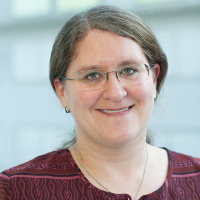
Hagemann, Nina
Dr. rer. nat. Nina Hagemann
Post-doctoral scientist,
Office: MFZ, 2nd floor, room 2.016
Nina Hagemann (born Stenzel) studied biology at the Ruhr University Bochum and received her diploma in 2007. Her diploma thesis focussed on the hitherto unknown FERM and PDZ domain containing protein 2 and its expression in epithelial cells. Nina Hagemann performed her dissertation in the research group “Biochemistry of polarized cells” at the Department of Molecular Neurobiochemistry of the Faculty of Chemistry and Biochemistry at the Ruhr University Bochum under the supervision of PD Dr. Kai S. Erdmann from 2007 until 2011. Her thesis entitled “Functional characterisation of the PDZ domain proteins FRMPD2 and PTP-BL in polarized cells” was awarded with the grade “with distinction”. After a subsequent post-doc time she moved to the University Hospital Essen and joined the NeuroScienceLab within the Chair of Vascular Neurology, Dementia and Ageing Research in 2012.
Nina Hagemann is interested in the role of transporters, receptors and sphingolipids in the ischemic brain with special emphasis on blood-brain barrier integrity and angiogenesis. Her group utilizes a wide range of in vitro and in vivo methods, evaluating restorative processes also in the context of vascular risk factors and comorbidities.
Lugo-Hernandez E, Squire A, Hagemann N, Brenzel A, Sardari M, Schlechter J, et al. 3D visualization and quantification of microvessels in the whole ischemic mouse brain using solvent-based clearing and light sheet microscopy. J Cereb Blood Flow Metab. 2017: 271678X17698970.
Zechariah A, ElAli A, Hagemann N, Jin F, Doeppner TR, Helfrich I, et al. Hyperlipidemia attenuates vascular endothelial growth factor-induced angiogenesis, impairs cerebral blood flow, and disturbs stroke recovery via decreased pericyte coverage of brain endothelial cells. Arterioscler Thromb Vasc Biol. 2013; 33(7):1561-7.
Jin F, Hagemann N, Schafer ST, Brockmeier U, Zechariah A, Hermann DM. SDF-1 restores angiogenesis synergistically with VEGF upon LDL exposure despite CXCR4 internalization and degradation. Cardiovasc Res. 2013; 100(3):481-91.
Jin F, Hagemann N, Brockmeier U, Schafer ST, Zechariah A, Hermann DM. LDL attenuates VEGF-induced angiogenesis via mechanisms involving VEGFR2 internalization and degradation following endosome-trans-Golgi network trafficking. Angiogenesis. 2013; 16(3):625-37.
Hagemann N, Ackermann N, Christmann J, Brier S, Yu F, Erdmann KS. The serologically defined colon cancer antigen-3 interacts with the protein tyrosine phosphatase PTPN13 and is involved in the regulation of cytokinesis. Oncogene. 2013; 32(39):4602-13.
Lipinski S, Grabe N, Jacobs G, Billmann-Born S, Till A, Hasler R, et al., Hagemann N, et al. RNAi screening identifies mediators of NOD2 signaling: implications for spatial specificity of MDP recognition. Proc Natl Acad Sci U S A. 2012; 109(52):21426-31.
Hagemann N, Hou X, Goody RS, Itzen A, Erdmann KS. Crystal structure of the Rab binding domain of OCRL1 in complex with Rab8 and functional implications of the OCRL1/Rab8 module for Lowe syndrome. Small GTPases. 2012; 3(2):107-10.
Hou X, Hagemann N, Schoebel S, Blankenfeldt W, Goody RS, Erdmann KS, et al. A structural basis for Lowe syndrome caused by mutations in the Rab-binding domain of OCRL1. EMBO J. 2011; 30(8):1659-70.
Stenzel N, Fetzer CP, Heumann R, Erdmann KS. PDZ-domain-directed basolateral targeting of the peripheral membrane protein FRMPD2 in epithelial cells. J Cell Sci. 2009; 122(Pt 18):3374-84.

Hagenacker, Tim
Univ.-Prof. Dr. med. Tim Hagenacker
Group leader “Diseases of the peripheral nervous system”
Office: MZ, 1st floor, room 1.104
Tim Hagenacker received his medical degree in 2007 at the University of Duisburg-Essen, Germany. His doctoral thesis focused on modulation of voltage gated calcium channels and interactions with thermoreceptors in sensory neurons. In 2009 he earned his Dr. med. with the “summa cum laude” degree. Since 2009 he works as post-doctoral scientist and clinician in the NeuroScienceLab / Department of Neurology initially in the group of Prof. Maria Schäfers, since 2011 as group leader of the research group “Diseases of the peripheral nervous system”.
Tim Hagenacker is interested in pathomechanisms of neuropathic pain, neurotoxicity and neuroprotective strategies in the peripheral nervous system. Current projects focus on interactions of voltage gated channels with cold sensing receptors and strategies for neuroprotection after chemotherapy. The group combines electrophysiological methods with imaging platforms, behavioral pain assessments and molecular biology techniques.
Hagenacker T, Splettstoesser F, Greffrath W, Treede RD, Büsselberg D. Capsaicin differentially modulates voltage-activated calcium channel currents in dorsal root ganglion neurones of rats. Brain Res. 2005; 1062(1-2):74-85.
Hagenacker T, Hillebrand I, Wissmann A, Büsselberg D, Schäfers M. Anti-allodynic effect of the flavonoid myricetin in a rat model of neuropathic pain: Involvement of p38 and protein kinase C mediated modulation of Ca2+-channels. Eur J Pain. 2010; 14(10):992-8.
Hagenacker T, Hillebrand I, Büsselberg D, Schäfers M. Myricetin reduces voltage activated potassium channel currents in DRG neurons by a p38 dependent mechanism. Brain Res Bull. 2010; 83(5):292-6.
Hagenacker T, Ledwig D, Büsselberg D. Additive inhibitory effects of calcitonin and capsaicin on voltage-activated calcium channel currents in nociceptive neurones of rat. Brain Res Bull. 2011; 85(1-2):75-80.
Hagenacker T, Schäfer N, Büsselberg D, Schäfers M. Analgesic inffectiveness of lacosamide after spinal nerve ligation and its sodium channel activity in injured neurons. Eur J Pain. 2012; 17(6):881-92.
Hagenacker T, Lampe M, Schäfers M. Icilin reduces voltage gated calcium channel currents in naïve and injured DRG neurons in the rat spinal nerve ligation model. Brain Res. 2014; 1557:171-9.
Leo M, Argalski S, Schäfers M, Hagenacker T. Modulation of voltage-gated sodium channels by activation of tumor necrosis factor receptor-1 and receptor-2 in small DRG neurons of rats. Mediators Inflamm. 2015; 2015:124942.
Totzeck A, Stettner M, Hagenacker T. Early platelet and leukocyte decline in patients with neuroinflammatory disorders after intravenous immunoglobulins. Eur J Neurol. 2017; 24(4):638-44.
Leo M, Schmitt LI, Erkel M, Melnikova M, Thomale J, Hagenacker T. Cisplatin-induced neuropathic pain is mediated by N-type VGCC in DRG neurons. Exp Neurol. 2017; 288:62-74.

Haupeltshofer, Steffen
Dr. rer. nat. Steffen Haupeltshofer
Post-doctoral scientist
Office: IG1, 9th floor, room 9.001
Steffen Haupeltshofer received his Bachelor’s degree in biology in 2011 at the Heinrich-Heine-University of Düsseldorf (Germany), followed by a Master’s degree in Biology at the Ruhr-University Bochum (Germany) in 2013 with special focus on neuroimmunology. He finished his doctoral thesis focused on the immunology of the gut-brain-axis in multiple sclerosis under the supervision of Prof. Dr. I. Kleiter, Prof. Dr. C. Esser, and Prof. Dr. D. Willbold in a collaborative project at the Heinrich-Heine-University of Düsseldorf. In 2019, he moved to the Department of Neurology and joined the research group of Prof. Dr. C. Kleinschnitz and Dr. F. Langhauser under the scope of a DFG-funded project focused on the influence of thrombo-inflammation in the chronic phase after cerebral ischemia. In 2022, he was affiliated to the recently founded research group of Prof. Dr. A.I. Casas, “Network pharmacology for neurovascular diseases” expanding on immune cell-based therapeutic options to modulate long-term stroke recovery.
Steffen Haupeltshofer’s research is focused on the identification of thrombo-inflammatory processes in the acute and chronic phases post-stroke. He incorporates neuroimmunology techniques, pharmacological interventions, and next-generation novel methods to unveil long-term processes in neurovascular animal models. Additionally, he is working on comorbidities leading to or impairing cerebral ischemia pathophisiology.
Szepanowski RD*, Haupeltshofer S*, Vonhof SE, Frank B, Kleinschnitz C, Casas AI. Thromboinflammatory challenges in stroke pathophysiology. Semin Immunopathol. 2023 May;45(3):389-410. doi: 10.1007/s00281-023-00994-4. Epub 2023 Jun 5. PMID: 37273022; PMCID: PMC10241149. *Equally contributed to this work
Ceylan U, Haupeltshofer S, Kämper L, Dann J, Ambrosius B, Gold R, Faissner S. Clozapine Regulates Microglia and Is Effective in Chronic Experimental Autoimmune Encephalomyelitis. Front Immunol. 2021 May 3;12:656941. doi: 10.3389/fimmu.2021.656941. PMID: 34012440; PMCID: PMC8126707.
Haupeltshofer S, Leichsenring T, Berg S, Pedreiturria X, Joachim SC, Tischoff I, Otte JM, Bopp T, Fantini MC, Esser C, Willbold D, Gold R, Faissner S, Kleiter I. Smad7 in intestinal CD4+ T cells determines autoimmunity in a spontaneous model of multiple sclerosis. Proc Natl Acad Sci U S A. 2019 Dec 17;116(51):25860-25869. doi: 10.1073/pnas.1905955116. Epub 2019 Dec 3. PMID: 31796589; PMCID: PMC6926056.

Hermann, Dirk M.
Chair of Vascular Neurology, Dementia and Ageing Research / Director NeuroScienceLab
Office: OZ1, ground floor, room 179
Dirk Hermann studied medicine at Justus Liebig University Gießen from 1987-1994. Following his MD thesis at the same University in 1995 and a residency (Arzt im Praktikum) at the Max Planck Institute of Psychiatry Munich in 1994-1995, he performed a postdoc at the Max Planck Institute for Neurological Research Cologne in 1995-1998, followed by his residency at the Department of Neurology of Eberhard Karls University Tübingen in 1998-2001. Following his neurological board examination in 2001 and his state doctorate (habilitation) in 2002, Dirk Hermann was associate professor and consultant neurologist at the University Hospital Zurich (Switzerland) in 2002-2008. Since 2008, Dirk Hermann holds the Chair of Vascular Neurology, Dementia and Ageing Research at the University of Duisburg-Essen.
Dirk Hermann’s research focusses on post-ischemic brain remodeling and plasticity, evaluating pathomechanisms contributing to secondary brain injury and searching strategies that promote neurological recovery in the post-acute stroke phase. Research activities include studies on post-ischemic axonal, dendritic and synaptic plasticity, angiogenesis, extracellular matrix remodeling, immune responses and vascular risk factors. Dirk Hermann’s group has long-lasting experience and skills in the evaluation of post-ischemic blood-brain barrier integrity. The group bridges in vitro and in vivo studies in animals and humans, combining structural and functional readouts with a broad set of research tools.
Bacigaluppi M, Pluchino S, Peruzzotti-Jametti L, Kilic E, Kilic U, Salani G, Brambilla E, West MJ, Comi G, Martino G, Hermann DM. Delayed post-ischaemic neuroprotection following systemic neural stem cell transplantation involves multiple mechanisms. Brain. 2009; 132:2239-51.
ElAli A, Hermann DM. Apolipoprotein E controls ATP-binding cassette transporters in the ischemic brain. Sci Signal. 2010; 3:ra72.
Hermann DM, Bassetti CL. Implications of ATP-binding cassette transporters for brain pharmacotherapies. Trends Pharmacol Sci. 2007; 28:128-34.
Hermann DM, Chopp M. Promoting brain remodelling and plasticity for stroke recovery: therapeutic promise and potential pitfalls of clinical translation. Lancet Neurol. 2012; 11:369-80.
Hermann DM, ElAli A. The abluminal endothelial membrane in neurovascular remodeling in health and disease. Sci Signal. 2012; 5:re4.
Kilic E, Spudich A, Kilic U, Rentsch KM, Vig R, Matter CM, Wunderli-Allenspach H, Fritschy JM, Bassetti CL, Hermann DM. ABCC1: a gateway for pharmacological compounds to the ischaemic brain. Brain. 2008; 131:2679-89.
Reitmeir R, Kilic E, Kilic U, Bacigaluppi M, ElAli A, Salani G, Pluchino S, Gassmann M, Hermann DM. Post-acute delivery of erythropoietin induces stroke recovery by promoting perilesional tissue remodelling and contralesional pyramidal tract plasticity. Brain. 2011; 134:84-99.
Reitmeir R, Kilic E, Reinboth BS, Guo Z, ElAli A, Zechariah A, Kilic U, Hermann DM. Vascular endothelial growth factor induces contralesional corticobulbar plasticity and functional neurological recovery in the ischemic brain. Acta Neuropathol. 2012; 123:273-84.
Spudich A, Kilic E, Xing H, Kilic U, Rentsch KM, Wunderli-Allenspach H, Bassetti CL, Hermann DM. Inhibition of multidrug resistance transporter-1 facilitates neuroprotective therapies after focal cerebral ischemia. Nat Neurosci. 2006; 9:487-8.

Hezel, Stefanie
Stefanie Hezel
Biotechnical Assistant
Office: IG1, 9th floor, BIC, Room 9.004
Steffi Hezel gained her degree as a Biotechnical Assistant (BTA, Biologisch-technische Assistentin) at the Berufsfachschulen Dr. Heinemann in Braunschweig in 2000. Following this, she started to work at the Department of Molecular Neuroendokrinology of the Max-Planck-Institute of Experimental Medicine in Göttingen. From 2009 to 2016 she worked in Gießen at the Department of Medicine in the clinical research group “Lung fibrosis”. In December 2016 she joined the NeuroScienceLab, where she is particularly involved in the groups “Thromboinflammation” and “Clinical and Experimental Neuroimmunology”.
Her main interests are histological techniques, PCR, Western blots and tissue culture.
MacKenzie B, Korfei M, Henneke I, Sibinska Z, Tian X, Hezel S, Dilai S, Wasnick R, Schneider B, Wilhelm J, El Agha E, Klepetko W, Seeger W, Schermuly R, Günther A, Bellusci S. Increased FGF1-FGFRc expression in idiopathic pulmonary fibrosis. Respir Res. 2015; 16:83.
MacKenzie B, Henneke I, Hezel S, Al Alam D, El Agha E, Chao CM, Quantius J, Wilhelm J, Jones M, Goth K, Li X, Seeger W, Königshoff M, Herold S, Rizvanov AA, Günther A, Bellusci S. Attenuating endogenous Fgfr2b ligands during bleomycin-induced lung fibrosis does not compromise murine lung repair. Am J Physiol Lung Cell Mol Physiol. 2015; 308(10):L1014-24.
Blank T, Nijholt I, Vollstaedt S, Spiess J. The corticotropin-releasing factor receptor 1 antagonist CP-154,526 reverses stress-induced learning deficits in mice. Behav Brain Res. 2003; 138(2):207-13.

Hussner, Tanja
Tanja Hussner MSc
PhD student
Office: MFZ, 2nd floor, room 2.016
Tanja hussner studied biology at the Heinrich Heine University Düsseldorf and received her bachelor degree in 2016 for a thesis investigating effects of blood lipids on angiogenesis in cell culture, which she already conducted in the NeuroScienceLab. Tanja received her Master of Science degree in Biology in 2018 from the University Duisburg-Essen for a thesis in which Tanja Hussner examines how the deactivation of acid sphingomyelinase, controlls ceramide formation upon inflammatory stimuli, controls endothelial proliferation, migration and tube formation under physiological conditions and conditions of hypoxia and ischemia
In 2018, Tanja Hussner started her PhD studies in the DFG-funded Research Training Group 2098 (“Biomedicine of sphingolipids”) under the supervision of Prof. Dirk M. Hermann, evaluating consequences of the acid sphingomyelinase / ceramide system for ischemic stroke development and recovery.

Kaltwasser, Britta
Britta Kaltwasser
Biotechnical Assistant
Office: MFZ, 2nd floor, room 2.016
Britta Kaltwasser completed her education as a Biology Lab Assistant at the University of Göttingen in 1994. Her professional activities as research technician started at the Institute of Humangenetics in Göttingen, followed by trainings and stays in research & development units of biomedical companies. Britta Kaltwasser gathered first experience in stroke research at the Department for Neurology of the University Hospital Göttingen. She then joined the Chair of Vascular Neurology, Dementia and Ageing Research and NeuroScienceLab in November 2010.
Techniques and methods used by Britta Kaltwasser include, but are not restricted to cell and stem cell culture, immunohistochemistry, Western blotting, ELISA and PCR.
Doeppner TR, Kaltwasser B, Sanchez-Mendoza EH, Caglayan AB, Bähr M, Hermann DM. Lithium-induced neuroprotection in stroke involves increased miR-124 expression, reduced RE1-silencing transcription factor abundance and decreased protein deubiquitination by GSK3β inhibition-independent pathways. J Cereb Blood Flow Metab. 2017; 37(3):914-926.
Hermann DM, Zechariah A, Kaltwasser B, Bosche B, Caglayan AB, Kilic E, Doeppner TR. Sustained neurological recovery induced by resveratrol is associated with angioneurogenesis rather than neuroprotection after focal cerebral ischemia. Neurobiol Dis. 2015; 83:16-25.
Doeppner TR, Pehlke JR, Kaltwasser B, Schlechter J, Kilic E, Bähr M, Hermann DM. The indirect NMDAR antagonist acamprosate induces postischemic neurologic recovery associated with sustained neuroprotection and neuroregeneration. J Cereb Blood Flow Metab. 2015; 35(12):2089-97.
Doeppner TR, Kaltwasser B, Fengyan J, Hermann DM, Bähr M. TAT-Hsp70 induces neuroprotection against stroke via anti-inflammatory actions providing appropriate cellular microenvironment for transplantation of neural precursor cells. J Cereb Blood Flow Metab. 2013; 33(11):1778-88.
Doeppner TR, Doehring M, Bretschneider E, Zechariah A, Kaltwasser B, Müller B, Koch JC, Bähr M, Hermann DM, Michel U. MicroRNA-124 protects against focal cerebral ischemia via mechanisms involving Usp14-dependent REST degradation Acta Neuropathol. 2013; 126(2):251-65.
Doeppner TR, Mlynarczuk-Bialy I, Kuckelkorn U, Kaltwasser B, Herz J, Hasan MR, Hermann DM, Bähr M. The novel proteasome inhibitor BSc2118 protects against cerebral ischaemia through HIF1A accumulation and enhanced angioneurogenesis Brain. 2012; 135(Pt 11):3282-97.
Doeppner TR, Kaltwasser B, ElAli A, Zechariah A, Hermann DM, Bähr M. Acute hepatocyte growth factor treatment induces long-term neuroprotection and stroke recovery via mechanisms involving neural precursor cell proliferation and differentiation. J Cereb Blood Flow Metab. 2011; 31(5):1251-62.

Kleinschnitz, Christoph
Chair of the Department of Neurology
Office: MZ, 1st floor, room 1.219
Christoph Kleinschnitz studied medicine at the Würzburg University from 1994 to 2000. Following his doctorate in 2001, he performed his residency at the Department of Neurology of the University Hospital Wurzburg and qualified as a neurologist in 2007. In 2009, he became head of the stroke unit and out-patient clinic, in which cerebrovascular disorders are treated. From 2010, he also led the Clinical Research Group for multiple sclerosis and neuroimmunology and soon later, he became executive consultant of the Department of Neurology and professor at the University Hospital Würzburg. He has received several prizes for his pioneering works.
His research focuses on thrombo-inflammatory disease mechanisms in stroke and multiple sclerosis, with strong translational focus. Together with his team, Prof. Kleinschnitz is aiming to identify new biomarkers and therapeutic targets that allow improving stroke treatment without the risk of adverse events.
Göbel K, …, Kleinschnitz C, Meuth SG. Blood coagulation factor XII drives adaptive immunity during neuroinflammation via CD87-mediated modulation of dendritic cells. Nature Commun. 2016; 7:11626.
Hopp S, …, Kleinschnitz C. Targeting coagulation factor XII as a novel therapeutic option in brain trauma. Ann Neurol. 2016; 79:970-82.
Kraft P, …, Kleinschnitz C. Efficacy and safety of platelet glycoprotein receptor blockade in aged and comorbid mice with acute experimental stroke. Stroke. 2015; 46:3502-6.
Schleicher RI, …, Kleinschnitz C, …, Langer HF. Platelets induce apoptosis via membrane-bound FasL. Blood. 2015; 126:1483-93.
Verhenne S, …, Kleinschnitz C, …, De Meyer SF. Platelet-derived VWF is not essential for normal thrombosis and hemostasis but fosters ischemic stroke injury in mice. Blood. 2015; 126:1715-22.
Mezger M, …, Kleinschnitz C, Langer HF. Platelets and vascular inflammation of the brain. Hamostaseologie. 2015; 35:244-51.
Göb E, …, Kleinschnitz C. Blocking of plasma kallikrein ameliorates stroke by reducing thromboinflammation. Ann Neurol. 2015; 77:784-803.
Schuhmann MK, …, Kleinschnitz C. CD28 superagonist-mediated boost of regulatory T cells increases thrombo-inflammation and ischemic neurodegeneration during the acute phase of experimental stroke. J Cereb Blood Flow Metab. 2015; 35:6-10.
Kleinschnitz C, …, Wiendl H. Regulatory T cells are strong promoters of acute ischemic stroke in mice by inducing dysfunction of the cerebral microvasculature. Blood 2013; 121:679-91.
Langhauser F, …, Kleinschnitz C. Kininogen deficiency protects from ischemic neurodegeneration in mice by reducing thrombosis, blood-brain barrier damage, and inflammation. Blood. 2012; 120:4082-92.


Leo, Markus
Dr. rer. nat. Markus Leo
Post-doctoral scientist
Office: IG1, 9th floor, room 9.004
Markus Leo studied biology at the Ruhr University Bochum (RUB) and received his Master of Science degree in 2013. His master thesis focussed on the influence of 7,8-dihydroxyflavone on the growth and survival of embryonic motor and hippocampal neurons. Markus Leo performed his dissertation within the group “Diseases of the peripheral nervous system” (formerly: “Experimental pain research”) of the NeuroScienceLab / Department of Neurology under the supervision of PD Dr. Tim Hagenacker from 2013 until 2016. His thesis entitled “Neurotoxic and neuroprotective mechanisms of cisplatin-induced polyneuropathy” was awarded with the grade “with distinction”. Since then, he is working as post-doc in the group “Diseases of the peripheral nervous system” of PD Dr. Tim Hagenacker.

Li, Anran
Anran Li, MSc
MD student
Office: MFZ, 2nd floor, room 2.016
Anran Li studied Clinical Medicine at Taishan Medical College from 2013 to 2018. In 2018 she obtained her bachelor degree and entered the Department of Neurology at Jilin University. During this period, she mainly engaged in the correlation between Inflammatory-Resolution mediators and large artery atherosclerotic stroke. In 2021, she received master’s degree and studied for her doctorate in NeuroScienceLab of Essen University under the supervision of Prof. Dirk Hermann.
Effects of mesenchymal stromal cell derived small extracellular vesicles(exosomes) on microvascular remodeling and angiogenesis in the atherosclerotic ischemic brain.
AnRan Li, Yu Guo, Gang Yao*. Valuable research for recognising the relationship between the autonomic nervous system disturbance and migraine. Cardiology in the Young, 2021;29: 1120-1120.
Gang Yao, YuHong Man, AnRan Li, et al. NO up-regulates migraine-related CGRP via activa-tion of an Akt/GSK-3beta/NF-kappaB signaling cascade in trigeminal ganglion neurons. Aging (Al-bany NY),2020;12(7):6370-6384.

Liebig, Kai C.
Kai Christine Liebig, MSc
PhD student
Office: IG1, 9th floor, BIC, Room 9.004
Kai Christine Liebig studied Biology (B.Sc.) and Medical Biology (M.Sc.) at the University Duisburg-Essen from 2015 to 2021. She joined the research group of Prof. Dr. Dr. Mark Stettner under supervision of Dr. Fabian Szepanowski in 2020 during her Master studies and completed her thesis there in which she investigated contacts between immune cells and cells of the peripheral nervous system. In October 2021 she obtained her Master’s degree and remained in the research group as a PhD student.
The infiltration of immune cells into the peripheral nerve is a hallmark of immune-mediated neuropathies. There, the immune cells do not only cause damage on neuronal and glial cells but also a pro-inflammatory milieu that drives Schwann cell dedifferentiation. Schwann cells seem to exhibit immunocompetence and the potential to modulate immune responses in the peripheral nerve; a characteristic that still requires extensive research.
Using a range of cell culture methods and in vitro-models in combination with animal models, Kai aims to recreate the cellular environment of inflammatory neuropathies. Furthermore, she is working with advanced electron microscopy techniques, i.e. focused ion beam/scanning electron microscopy (FIB/SEM) and the associated sample preparation procedures and data segmentation to visualize cellular contacts on an ultrastructural level.

Liu, Xiaolong
Xiaolong Liu, MSc
MD student
Office: MFZ, 2nd floor, room 2.038
Xiaolong Liu studied Clinical Medicine at Henan University from 2014 to 2019. In 2019 he obtained his bachelor degree and entered the Department of Neurosurgery at Jilin University. During this period, he mainly engaged in Mechanism of chemotactic effect of exosom-mediated CCL2/CCR2 signaling on inflammatory monocytes after craniocerebral injury. In 2022, he received master’s degree and studied for his doctorate in NeuroScienceLab of Essen University under the supervision of Prof. Dirk Hermann.
To evaluate the role of surface markers CD73 and CD39 in mesenchymal stem cell-derived small extracellular vesicles (EVs) mediating neuroprotection after ischemic stroke in mice.
Liu Xiaolong, Li Wenchen, Chen bo, Zhu Wenhao, Zhang Xiaoyu, Wang Haifeng. The influence of the head of the brain injury in the brain injury in the brain lesion and the effect of the blood brain barrier. The Chinese neurotraumatic surgery electronic journal, 2021,7(06): 325-330.
Chen Keyin, Chen Bo, Liu Xiaolong, Zhang Shuyan. The impact of the CD47 on the formation of blood angiogenesis in the mouse brain trauma and its molecular mechanism. Journal of jilin university (medical edition), 2022,48(04): 10.13481/j.1671-587x.20220401.
Zhu W, Chen L, Wu Z, Li W, Liu X, Wang Y, Guo M, Ito Y, Wang L, Zhang P, Wang H. Bioorthogonal DOPA-NGF activated tissue engineering microunits for recovery from traumatic brain injury by microenvironment regulation. Acta Biomater. 2022 Sep 15;150:67-82. doi: 10.1016/j.actbio.2022.07.018. Epub 2022 Jul 13. PMID: 35842032.
Liu T, Zhu W, Zhang X, He C, Liu X, Xin Q, Chen K, Wang H. Recent Advances in Cell and Functional Biomaterial Treatment for Spinal Cord Injury. Biomed Res Int. 2022 Aug 8;2022:5079153. doi: 10.1155/2022/5079153. PMID: 35978649; PMCID: PMC9377911.

Luo, Ning
Ning Luo, MSc
MD student
Office: MFZ, 2nd floor, room 2.038
Ning studied Clinical Medicine at Southwest Medical University from 2007 to 2012 when he received his bachelor degree. He received his master degree in Spinalsurgery at Southwest Medical University in 2016. Since June 2021 he started to study for his MD degree in the NeuroScienceLab under the supervision of Prof. Dirk Hermann.
Stroke is the most common cause of long-term disability and is associated with persistent functional neurological impairment in the vast majority of stroke patients. With the recent success of recanalization, there is a need to enhance follow-up therapy for neurological recovery after stroke injury. Ning’s research focuses on promoting exogenous neuronal plasticity through optogenetics stimulation of the hypothalamus to improve functional recovery after stroke.
Ning Luo, Xia He, Guangzhou Li, Yehui Liao, Qiang Tang, Rupei Ye, Dejun Zhong. Desmoid Tumor Presenting as a Typical Cervical Dumbbell Tumor:A Case Report and Literature Review. World Neurosurgery.2019,10,1878-8750(19):30033-6.
Yehui Liao, Qiang Tang, Chao Tang, Ning Luo, Fei Ma, Dejun Zhong, Qing Wang. Application of pain management in enhancing patient recovery after percutaneous kyphoplasty surgery. West China Medical Journal, 2018, 33(9):1173-1176.
Chao Tang, Yehui Liao, Qiang Tang, Fei Ma, Ning Luo, Sheng Yang, Hongchun He, Dejun Zhong. Clinical efficacy of intraoperative hemostatic gauze covering teared dura meter in the treatment of cerebrospinal fluid leakage during lumbar spine surgery. Chinese Journal of Spine and Spinal Cord, 2018, 28(9): 819-825.
Fei Ma, Yehui Liao, Qiang Tang, Chao Tang, Ning Luo, Sheng Yang, Hongchun He, Dejun Zhong. Influence of HBV infection on wound healing of incision after single-level open posterior instrumented lumbar fusion and correlated factors analysis. Chinese Journal of Spine and Spinal Cord, 2018, 28(7): 634-640.
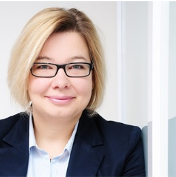
Mausberg, Anne K
Dr. rer. nat. Anne K. Mausberg
Post-doctoral scientist,
Office: IG1, 9th floor, BIC, Room 9.002
Anne K. Mausberg studied biology at the Heinrich Heine University in Düsseldorf. Her diploma thesis focused on the T cell response after Toxoplasma gondii infection and the characterization of the protective T cell receptor repertoire. She sticked to the field of immunology and performed her PhD thesis at the Institute for Microbiology and Virology under the supervision of PD Dr. G. Reichmann and Prof. Dr. K. Pfeffer. Here she analyzed the effect of the cytokine GM-CSF on dendritic cells of the central nervous system and set the basis for her special interest in neuroimmunology. To further pursue this topic after the PhD she joined the research group of Prof. Dr. B. C. Kieseier at the Department of Neurology. Since 2016 she is a member of the research group “Clinical and experimental neuroimmunology” within the NeuroScienceLab.
Autoimmune diseases of the peripheral and central nervous system are not sufficiently treatable. Different immune cell subpopulations like T cells and NK cells as well as macrophages influence the course of diseases and determine disease outcome. To better understand their pathogenesis, the group is interested in mechanisms underlying autoimmune attacks that subsequently result in nervous system dysfunction and damage. Additionally the work group also characterizes treatment responses to drugs in order to improve currently available treatment options for autoimmune diseases.
Szepanowski F, Donaldson DM, Hartung HP, Mausberg AK, Kleinschnitz C, Kieseier BC, Stettner M. Dimethyl fumarate accelerates peripheral nerve regeneration via activation of the anti-inflammatory and cytoprotective Nrf2/HO-1 signaling pathway. Acta Neuropathol. 2017; 133:489–491.
Buerth C*, Mausberg AK*, Heininger MK, Hartung HP, Kieseier BC, Ernst JF. Oral tolerance induction in experimental autoimmune encephalomyelitis with Candida utilis expressing the immunogenic MOG35-55 peptide. PLoS ONE. 2016; 11:e0155082.
Warnke C*, Mausberg AK*, Stettner M, Dehmel T, Nekrich L, Meyer Zu Hörste G, Hartung HP, Fogdell-Hahn A, Adams O, Kieseier BC. Natalizumab affects the T-cell receptor repertoire in patients with multiple sclerosis. Neurology. 2013; 81:1400–1408.
Mausberg AK, Dorok M, Stettner M, Müller M, Hartung HP, Dehmel T, Warnke C, Meyer Zu Hörste G, Kieseier BC. Recovery of the T-cell repertoire in CIDP by IV immunoglobulins. Neurology. 2013; 80:296–303.
Stettner M, Wolffram K, Mausberg AK, Wolf C, Heikaus S, Derksen A, Dehmel T, Kieseier BC. A reliable in vitro model for studying peripheral nerve myelination in mouse. J Neurosci Methods. 2013; 214:69–79.
Mausberg AK, Meyer Zu Hörste G, Dehmel T, Stettner M, Lehmann HC, Sheikh KA, Kieseier BC. Erythropoietin ameliorates rat experimental autoimmune neuritis by inducing transforming growth factor-beta in macrophages. PLoS ONE. 2011; 6:e26280.
Mausberg AK, Jander S, Reichmann G. Intracerebral granulocyte-macrophage colony-stimulating factor induces functionally competent dendritic cells in the mouse brain. Glia. 2009; 57:1341–1350.

Mencl, Stine
Dr. rer. nat. Stine Mencl
Post-doctoral scientist/Lab Manager
Office: IG1, 9th floor, room 9.002
Stine Mencl studied Biology at the University of Hohenheim in Stuttgart and received her diploma at the Institute of Zoology in 2008. As a PhD student at the “Graduate School of Cellular & Molecular Neuroscience”, she studied murine retinal neurodegeneration models in the division of experimental Ophthalmology (University Hospital Tübingen), where she finished her PhD thesis in 2012. Joining the group of Prof. Kleinschnitz as a postdoctoral fellow at the Department of Experimental Neurology (University Hospital of Würzburg), she traded the eye for the brain. When Prof. Kleinschnitz became chair of the Neurology Clinic at the Essen University Hospital and founded the NeuroScienceLab in 2016, she moved to Essen to support the lab and teach students.
Stine Mencl investigates neurodegenerative disorders like stroke, stroke-related heart failure, and cerebral air embolism.
Rohlfing AK, Kolb K, Sigle M, …, Mencl S, …, Gawaz M. Ackr3 regulates platelet activation and ischemia-reperfusion tissue injury. Nature communications. 2022;13:1823
Rolfes L, Ruck T, David C, Mencl S, …, Meuth SG. Natural killer cells are present in rag1(-/-) mice and promote tissue damage during the acute phase of ischemic stroke. Translational stroke research. 2022;13:197-211
Koeniger T, Bell L, Mifka A, …, Mencl S…, Kuerten S. Bone marrow-derived myeloid progenitors in the leptomeninges of adult mice. Stem Cells. 2021;39:227-239
Bieber M, Gronewold J, Scharf AC, …, Mencl S, …, Hermann DM. Validity and reliability of neurological scores in mice exposed to middle cerebral artery occlusion. Stroke. 2019;50:2875-2882
Hopp S, Albert-Weissenberger C, Mencl S, …, Kleinschnitz C. Targeting coagulation factor xii as a novel therapeutic option in brain trauma. Annals of neurology. 2016;79:970-982
Kleinschnitz C, Mencl S, Kleikers PWM, …, Schmidt H. Nos knockout or inhibition but not disrupting psd-95-nos interaction protect against ischemic brain damage. Journal of cerebral blood flow and metabolism : official journal of the International Society of Cerebral Blood Flow and Metabolism. 2016;36:1508-1512
Mencl S, Hennig N, Hopp S, …, Kleinschnitz C. Fty720 does not protect from traumatic brain injury in mice despite reducing posttraumatic inflammation. Journal of neuroimmunology. 2014;274:125-131
Mencl S, Garz C, Niklass S, …, Kleinschnitz C, Schreiber S. Early microvascular dysfunction in cerebral small vessel disease is not detectable on 3.0 tesla magnetic resonance imaging: A longitudinal study in spontaneously hypertensive stroke-prone rats. Experimental & translational stroke medicine. 2013;5:8

Mohamud Yusuf, Ayan
Dr. rer. nat. Ayan Mohamud Yusuf
Post-doctoral scientist,
Office: MFZ, 2nd floor, room 2.016
Ayan Mohamud Yusuf received her Master of Science degree in Medical Biology in 2015 from the University Duisburg-Essen for a thesis, in which she examined ceramide changes in neuroblastoma cells exposed to ischemia-reperfusion injury. She subsequently performed her PhD studies in the DFG-funded Research Training Group 2098 (“Biomedicine of sphingolipids”) under the supervision of Prof. Dirk M. Hermann, evaluating consequences of the acid sphingomyelinase / ceramide system for ischemic stroke development and recovery. As a post-doctoral fellow within the research consortium FOR 279, Ayan Mohamud Yusuf studies the role of inflammatory processes in repair mechanisms and long-term recovery following stroke.
Ayan Mohamud Yusuf is interested in the role of microglia and T cells in controlling microvascular integrity and the contribution of angiogenesis for post-stroke recovery. Furthermore, she analyzes how bioactive sphingolipids such as ceramide control brain injury and remodeling after ischemic stroke

Pilath-Eilers, Matthias
Matthias Pilath-Eilers, MSc
PhD student
Office: MFZ, 2nd floor, room 2.031
Matthias Pilath-Eilers studied biology at the Heinrich Heine University Düsseldorf and received his Bachelors degree in 2018 for a thesis investigating changes in extracellular potassium homeostasis evoked by Gamma aminobutyric acid in mouse hippocampus. Matthias finished his master degree 2021. He conducted his thesis at the NeuroScienceLab, investigating the effect of interleukin activated microglia on synapses of primary neuron-astrocyte co-cultures as well as live cell imaging of GCaMP6f astrocytes to study the effect of activated microglia on astrocytic calcium signalling.
Ischemic stroke not only affects the blood-brain barrier and astrocytes but also alters the integrity of extracellular matrix (ECM). Changes in ECM reach from rearrangements after mild hypoperfusion to degradation after focal cerebral ischaemia and are closely related to reactive astrocytes. It is expected that the interplay between ECM and astrocytes is important for the formation of new synapses, yet the question how astrocytes detect changes in the ECM remains open. Potentially, the ECM-astrocyte interaction is mediated by mechanoreceptors, but their role in post stroke brain remodelling remains unknown.
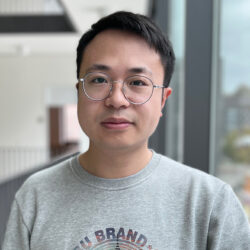
Quan, Xingyun
Xingyun Quan, MSc
MD student
Office: MFZ, 2nd floor, room 2.038
Quan studied Clinical Medicine at Southwest Medical University from 2013 to 2018 when he received his bachelor’s degree. He received his master’s degree in Neurosurgery at Southwest Medical University in 2021. In June 2022 he started to study for his MD degree in the NeuroScienceLab under the supervision of Prof. Dirk Hermann and Dr. Ulf Brockmeier.
Stroke is the most common cause of long-term disability and is associated with persistent functional neurological impairment in the vast majority of stroke patients. With the recent success of recanalization, there is a need to enhance follow-up therapy for neurological recovery after stroke injury. His research focuses on promoting neuronal plasticity through the P62-keap1-Nrf2 pathway to improve functional recovery after stroke.
Quan Xingyun, Song Li, Zheng X, et al. Reduction of Autophagosome Overload Attenuates Neuronal Cell Death After Traumatic Brain Injury[J]. Neuroscience, 2021, 460(2923182).
Song Li, Quan Xingyun, Chen Chaoyi et al. Correlation Between Tumor Molecular Markers and Perioperative Epilepsy in Patients With Glioma: A Systematic Review and Meta-Analysis.[J] .Front Neurol, 2021, 12: 692751.
Song Li, Quan Xingyun, Su Lin et al. Inflammation and behavioral symptoms in preoperational glioma patients: Is depression, anxiety, and cognitive impairment related to markers of systemic inflammation?[J] .Brain Behav, 2020, 10: e01771.
Ding Huaqiang, Quan Xingyun, Liao Shuai et al. Recurrent Acute Subdural Hematoma Due to Middle Meningeal Artery Bleeding Treated by Embolization.[J] .World Neurosurg, 2020, 134: 6-9.

Rohde, Svenja Christina
Svenja Christina Rohde, MSc
PhD student
Office: IG1, 9th floor, room 9.001
Svenja studied Medical Biology (BSc.) at the Radboud University in Nijmegen, The Netherlands (2020) followed by a Human Biology specialization (MSc.) at the same university (2022). After receiving her Master’s degree, she started her PhD as part of the research group of Prof. Dr. Ana Casas, “Network pharmacology for neurovascular diseases”.
Different forms of programmed cell death are currently giving greater attention in several preclinical and clinical research fields. Specifically, ferroptosis is a non-apoptotic form of cell death that is nowadays under assessment due to its relevance in several ischemia-related indications. However, unique biomarkers and inhibitors of ferroptosis are still rarely identified. Therefore, through different in vitro and in vivo models together with a battery of molecular biology assays, Svenja aims to identify and preclinically validate neuro-specific ferroptosis markers relevant in the pathomechanism of brain ischemia.

Scharf, Anne-Carina
Anne-Carina Scharf, MSc
PhD/MD student
Office: OZ1, ground floor, room 0.008
Anne-Carina Scharf received her Master of Science in Psychology with emphasis on neuropsychology and biopsychology at the University of Wuppertal. Her master thesis focused on neuropsychological recovery and after paramedian thalamic stroke. In parallel, Anne-Carina Scharf started to study Human Medicine at the University Hospital Essen. Currently, she is a PhD/ MD student in the NeuroScienceLab funded by the Claussen-Simon-Foundation.
Anne-Carina Scharf examines neurodegenerative changes induced by thalamic stroke, linking persistent neurological and neuropsychological deficits observed in different stroke topographies (i.e., paramedian, inferolateral and anterior thalamic stroke) with secondary neurodegenerative changes. Within her thesis, Anne-Carina Scharf develops innovative neuroimaging data analysis tools, including voxel-based morphometry and lesion-symptom mapping.

Schmitt, Linda-Isabell
Linda-Isabell Schmitt, MSc
PhD student
Office: IG1, 9th floor, room 9.004
Linda-Isabell Schmitt studied biology at the Ruhr University Bochum and received her bachelor degree in 2016. Her bachelor thesis focussed on the influence of the chemotherapeutic oxaliplatin on voltage-gated calcium channels in dorsal root ganglion neurons. At the moment she is working as a student assistant in the group “Diseases of the peripheral nervous system” under the supervision of PD Dr. Tim Hagenacker.

Stettner, Mark
Professor
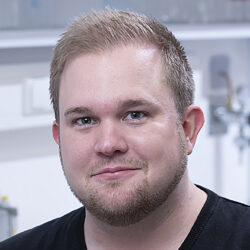
Szepanowski, Fabian
Dr. rer. nat. Fabian Szepanowski
Post-doctoral scientist,
Office: IG1, 9th floor, BIC, Room 9.002
Fabian Szepanowski studied biology at the Heinrich-Heine-University Düsseldorf from 2009-2014. His Master thesis focused on the impact of sphingosine-1-phosphate receptor modulation on peripheral nerve regeneration. In subsequent years, he developed expertise in the field of neural regeneration under supervision of Prof. Dr. Bernd C. Kieseier at the Department of Neurology in Düsseldorf, culminating in his PhD thesis on “Therapeutic approaches for the improvement of peripheral nerve regeneration”. By late 2018, he joined the lab of Prof. Dr. Dr. Mark Stettner within the Department of Neurology at the University Medicine Essen to pursue his interest in neural regeneration and to apply and extend his knowledge to models of inflammatory neuropathies.
Despite an emerging understanding of the cellular and molecular processes underlying the pathophysiology of mechanical nerve injuries as well as immune-mediated neuropathies, no therapy to foster nerve recovery has been translated to clinical practice thus far. Interestingly, nerve degeneration as observed after injury and in inflammatory neuropathies shares mechanistic commonalities: Schwann cell dedifferentiation, demyelination, axonal energy depletion and subsequent disintegration are major hallmarks of both pathologies. Therefore, the exploration of therapeutic approaches in models of mechanical injury and both acute and chronic inflammatory neuropathy models may pave the way for novel regenerative strategies in the inflamed PNS.
Szepanowski F, Winkelhausen M, Steubing RD, Mausberg AK, Kleinschnitz C, Stettner M. LPA1 signaling drives Schwann cell dedifferentiation in experimental autoimmune neuritis. J Neuroinflammation. 2021 Dec 17;18(1):293.
Szepanowski F, Warnke C, Meyer Zu Hörste G, Mausberg AK, Hartung HP, Kleinschnitz C, Stettner M. Secondary Immunodeficiency and Risk of Infection Following Immune Therapies in Neurology. CNS Drugs. 2021 Nov;35(11):1173-1188.
Heming M, Li X, Räuber S, Mausberg AK, Börsch AL, Hartlehnert M, Singhal A, Lu IN, Fleischer M, Szepanowski F, Witzke O, Brenner T, Dittmer U, Yosef N, Kleinschnitz C, Wiendl H, Stettner M, Meyer Zu Hörste G. Neurological Manifestations of COVID-19 Feature T Cell Exhaustion and Dedifferentiated Monocytes in Cerebrospinal Fluid. Immunity. 2021 Jan 12;54(1):164-175.e6.
Szepanowski F, Kleinschnitz C, Stettner M. Glyphosate-based herbicide: a risk factor for demyelinating conditions of the peripheral nervous system? Neural Regen Res. 2019 Dec;14(12):2079-2080.
Szepanowski F, Szepanowski LP, Mausberg AK, Albrecht P, Kleinschnitz C, Kieseier BC, Stettner M. Differential impact of pure glyphosate and glyphosate-based herbicide in a model of peripheral nervous system myelination. Acta Neuropathol. 2018 Dec;136(6):979-982.
Szepanowski F, Szepanowski LP, Mausberg AK, Kleinschnitz C, Kieseier BC, Stettner M. Lysophosphatidic acid propagates post-injury Schwann cell dedifferentiation through LPA1 signaling. Neurosci Lett. 2018 Jan 1;662:136-141.
Szepanowski F, Donaldson DM, Hartung HP, Mausberg AK, Kleinschnitz C, Kieseier BC, Stettner M. Dimethyl fumarate accelerates peripheral nerve regeneration via activation of the anti-inflammatory and cytoprotective Nrf2/HO-1 signaling pathway. Acta Neuropathol. 2017 Mar;133(3):489-491.
Szepanowski F, Kieseier BC. Targeting lysophospholipid signaling as a therapeutic approach towards improved peripheral nerve regeneration. Neural Regen Res. 2016 Nov;11(11):1754-1755.
Szepanowski F, Derksen A, Steiner I, Meyer Zu Hörste G, Daldrup T, Hartung HP, Kieseier BC. Fingolimod promotes peripheral nerve regeneration via modulation of lysophospholipid signaling. J Neuroinflammation. 2016 Jun 10;13(1):143.

Szepanowski, Rebecca
Rebecca Szepanowski (nee Steubing), MSc
Scientific researcher
Office: IG1, 9th floor, room 9.001
Rebecca Steubing studied biology at the Ruhr-University in Bochum and received her Master’s degree at the institute for pharmacology and toxicology (University Witten/Herdecke) in 2016. As a PhD student at the University Hospital Düsseldorf, she started studying inflammation in an acute model of myocardial infarction. In October 2017, she changed subjects and started as a PhD student at the NeuroScienceLab under the lead of Prof. Dr. Kleinschnitz and the supervision of Dr. Stine Mencl and Dr. Friederike Langhauser, focusing on neurodegeneration and inflammatory processes in stroke models.
Currently, she is working as a postdoctoral researcher in the newly founded research group of Prof. Dr. Ana Casas, “Network pharmacology for neurovascular diseases”. Here, her focus is centred on long-term recovery after stroke and how in silico target identification can help modulate these processes.
Rebecca Steubing uses in vitro and in vivo methods, including cell culture, molecular biology, microscopy, and behavioural assessments to unravel the complex underlying mechanism of cerebrovascular disorders with the immune system.
Her particular interest lies in studying long-term recovery and restorative processes after experimental cerebral ischaemia (tMCAO).
Nording H, Sauter M, Lin C, Steubing R, Geisler S, Sun Y, Niethammer J, Emschermann F, Wang Y, Zieger B, Nieswandt B, Kleinschnitz C, Simon DI, Langer HF. Activated platelets upregulate beta2 integrin mac-1 (cd11b/cd18) on dendritic cells, which mediates heterotypic cell-cell interaction. Journal of immunology. 2022;208:1729-1741
Szepanowski F, Winkelhausen M, Steubing RD, Mausberg AK, Kleinschnitz C, Stettner M. Lpa1 signaling drives schwann cell dedifferentiation in experimental autoimmune neuritis. Journal of neuroinflammation. 2021;18:293
Petersen J, Mergia E, Kennel L, Drees O, Steubing RD, Real CI, Kallenborn-Gerhardt W, Lu R, Friebe A, Koesling D, Schmidtko A. Distinct functions of soluble guanylyl cyclase isoforms no-gc1 and no-gc2 in inflammatory and neuropathic pain processing. Pain. 2019;160:607-618

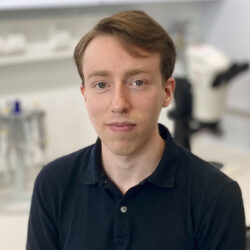
Vonhof, Sebastian
Sebastian Vonhof, cand. med.
MD student
Office: IG1, 9th floor, room 9.001
After successfully completing seven semesters of medical school at the University of Pécs (Hungary), Sebastian Vonhof enrolled at the University of Duisburg-Essen in 2020 to continue pursuing his MD degree. To conduct his MD thesis, he joined the NeuroScienceLab last April 2022 as part of the recently founded Network Pharmacology for Neurovascular Diseases research group under the lead of Prof. Dr. Ana I. Casas.
Network pharmacology-based treatment as a therapeutic strategy in subacute brain ischemia.
Applying molecular biology, immunohistochemistry, and microscopy techniques to deeply understand blood-brain-barrier opening, microglia activation, and neuroprotection upon treatment.
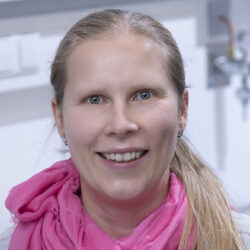
Wagner, Kristina
Dr. rer. nat. Anne K. Mausberg
Biotechnical Assistant
Office: IG1, 9th floor, BIC, Room 9.009
Kristina Wagner gained her degree as a Biotechnical Assistant (BTA, Biologisch-technische Assistentin) at Berufskolleg Hilden in 2004. Shortly after that she started her first job at Axis-Shield Diagnostics, Dundee, Scotland. During her two years at Axis-Shield she was part of a team that developed immunoassays for large scale analyzers, in particular an assay for the detection of HbA1c, a marker for diabetes.
In 2006 she started to work at a research lab at the Department of Pharmacology at Oxford University. The main research of the group focuses on the connections between neurons within the brain, especially the hippocampus and septum. During her 10 years in Oxford, Kristina Wagner learned a large variety of histological and microscopy techniques. She visualized neurons in vivo and in vitro via light, fluorescence, confocal and electron microscopy. Performing immunoassays on free floating sections and on grids for electron microscopy or semi-thin sections was part of her daily routine, in addition to lab organization and management. In particular electron microscopy was one of her favorites for which she can prepare the samples from cutting to staining and analyze synapses using the electron microscope. In April 2017 she joined the NeuroScienceLab, where she now also acquired skills in molecular biology, like PCR, Western blots and tissue culture.
Her main interests are immunohistochemical techniques, microscopy, PCR, Western blots, gel electrophoresis and tissue culture. She enjoys learning new techniques but also likes to find out more about the theoretical background of her experiments.
Francavilla R, Villette V, Luo X, Chamberland S, Munoz-Pino E, Camire O, Wagner K, Kis V, Somogyi P, Topolnik L Connectivity and network state-dependent recruitment of long-range VIP-GABAergic neurons in the mouse hippocampus. Nat Commun. 2018 Nov 28;9(1):5043. doi: 10.1038/s41467-018-07162-5.

Wang, Chen
Dr. med. Dr. rer. nat. Chen Wang
Post-doctoral scientist
Office: MFZ, 2nd floor, room 2.016
Chen Wang received his bachelor’s degree in Clinical Medicine in 2013 and master’s degree in Neurology in 2016 at Wenzhou Medical University (Zhejiang, China). His diploma thesis studied endogenous neuroprotection by recombinant high-mobility group box 1 (HMGB1) preconditioning in ischemic stroke. In 2017, he started his doctoral thesis under the supervision of Prof. Dirk Hermann at the Chair of Vascular Neurology, Dementia and Ageing Research in the University Hospital Essen (Essen, Germany). He obtained his title of Dr. med. (Doctor of Medicine; summa cum laude) in 2020 and title of Dr. rer. nat. (Doctor of Philosophy; magna cum laude) in 2022. His doctoral theses studied effects of mesenchymal stromal cell-derived extracellular vesicles (MSC-EVs) on neuroprotection, brain remodeling, and neurological recovery in ischemic stroke. Since October 2022, he works as a post-doctoral fellow to continue Stroke–MSC-EV research.
Chen Wang focuses on translational research of MSC-EVs in ischemic stroke, for example, the therapeutical efficacy of MSC-EVs in ischemic stroke with comorbidities (e.g. age, sex, and hyperlipidemia). Particularly, he is interested in the mechanism of action of MSC-EV anti-inflammation and immunomodulation in post-stroke neuroprotection and neurorestoration.
Wang C, Giebel B, Hermann DM. Neuroprotective and neurorestorative actions of mesenchymal stromal cell-derived small extracellular vesicles in the ischemic brain. Explor. Neurosci. 2022;1:61-74
Wang C, Börger V, Mohamud Yusuf A, Tertel T, Stambouli O, Murke F, Freund N, Kleinschnitz C, Herz J, Gunzer M, Popa-Wagner A, Doeppner TR, Giebel B, Hermann DM. Postischemic Neuroprotection Associated With Anti-Inflammatory Effects by Mesenchymal Stromal Cell-Derived Small Extracellular Vesicles in Aged Mice. Stroke. 2022;53:e14-e18
Gregorius J*, Wang C*, Stambouli O, Hussner T, Qi Y, Tertel T, Börger V, Mohamud Yusuf A, Hagemann N, Yin D, Dittrich R, Mouloud Y, Mairinger FD, Magraoui Fouzi E, Popa-Wagner A, Kleinschnitz C, Doeppner TR, Gunzer M, Meyer HE, Giebel B, Hermann DM. Small extracellular vesicles obtained from hypoxic mesenchymal stromal cells have unique characteristics that promote cerebral angiogenesis, brain remodeling and neurological recovery after focal cerebral ischemia in mice. Basic Res Cardiol. 2021;116:40 (*contributed equally)
Wang C, Börger V, Sardari M, Murke F, Skuljec J, Pul R, Hagemann N, Dzyubenko E, Dittrich R, Gregorius J, Hasenberg M, Kleinschnitz C, Popa-Wagner A, Doeppner TR, Gunzer M, Giebel B, Hermann DM. Mesenchymal Stromal Cell-Derived Small Extracellular Vesicles Induce Ischemic Neuroprotection by Modulating Leukocytes and Specifically Neutrophils. Stroke. 2020;51:1825-1834
Wang C, Liu XX, Huang KB, Yin SB, Wei JJ, Hu YF, Gu Y, Zheng GQ: Preconditioning with recombinant high-mobility group box 1 induces ischemic tolerance in a rat model of focal cerebral ischemia-reperfusion. J Neurochem. 2016; 137(4):576-588.

Wu, Nihong
Nihong Wu, MSc
MD student
Office: MFZ, 2nd floor, room 2.016
Nihong Wu earned her Bachelor’s Degree in Clinical Medicine from Nanchang University between 2013 and 2018, and later, her Master’s Degree in Neurology from Southern Medical University from 2018 to 2021. Specializing in post-ischemia prognosis, she has predominantly worked in stroke research in recent years. In 2023, she advanced her studies at the Laboratory of Neuroscience, University of Duisburg-Essen, seeking her doctoral degrees under the guidance of Prof. Dirk M. Hermann.
Role of monocytes and microglia in controlling stroke recovery
Aiwu Zhang, Nihong Wu, Xintong Liu, Tao Jiang. Continuous intravenous tirofiban can improve the 90-day functional outcome and decrease 90-day mortality without increasing bleeding risk in acute ischemic stroke patients treated by endovascular therapy: A meta-analysis. J Clin Neurosci. 2022 May; 99:109-116.

Yang, Yukun
Yukun Yang, MSc
MD student
Office: MFZ, 2nd floor, room 2.016
Yukun Yang studied Clinical Medicine at Southwest Medical University from 2012 to 2017 when he received his bachelor’s degree. He received his master’s degree in Internal Medicine at Kunming Medical University in 2020. In October 2022 he started to study for his MD degree in the NeuroScience Lab under the supervision of Prof. Dirk Hermann and Dr. Ulf Brockmeier.
Ischemia and hypoxia can trigger substantial metabolic changes in cells. His research predominantly centers on investigating modifications in endoplasmic reticulum stress within cells during ischemia, as well as assessing the influence of the unfolded protein response (UPR) pathway on cell survival in ischemia-reperfusion conditions.
Yang Y, Li Y, Wang Y, Ruan G, Tian C, Wang Q, et al. The effects of BMMSC treatment on lung tissue degeneration in elderly macaques. Stem Cell Res Ther. 2021 Mar 1;12(1):156.
Li C, Zhao Y, Li F, Wang Z, Qiu Z, Yang Y, et al. Semaphorin3A Exacerbates Cardiac Microvascular Rarefaction in Pressure Overload-Induced Heart Disease. Adv Sci (Weinh). 2023 Jul;10(21):e2206801.

Zafar, Maria
Maria Zafar, MSc
PhD student
Office: MFZ, 2nd floor, room 2.016
Maria Zafar received her Master of Science degree in Pharmacology in 2013 from the University of Agriculture, Faisalabad, Pakistan. In 2016, she started her PhD studies in the NeuroScienceLab funded by a DAAD grant, carrying out research projects in interaction with the DFG-funded Research Training Group 2098 (“Biomedicine of sphingolipids”).
The sphingolipid ceramide controls fundamental cellular processes such as apoptosis, cell proliferation and growth. There is little knowledge how ceramide controls vascular remodeling in ischemic stroke. Using proliferation, migration and tube formation assays in vitro on endothelial cells exposed to oxygen-glucose-deprivation (OGD), Maria Zafar investigates the role of the acid sphingomyelinase / ceramide pathway in angiogenesis.
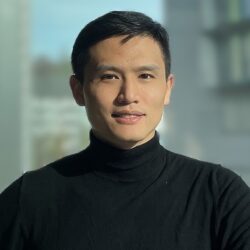
Zhang, Yiqiao
Yiqiao Zhang, MSc
PhD student
Office: MFZ, 2nd floor, room 2.016
Yiqiao Zhang studied Pharmacology at Second Military Medical University from 2004 to 2008. From 2012 to 2015, he engaged with his Master career in Academy of Military Medical Sciences and major in Science in Molecular Pharmacology. After graduation he worked as Neurological Rehabilitation Clinical Pharmacist in China Rehabilitation Center. Since 2023, he studied for his doctorate in NeuroScienceLab of Essen University under the supervision of Prof. Dirk M. Hermann.
Heterogenesis and Effects of immune cell derived small extracellular vesicles(exosomes) on microvascular remodeling and angiogenesis in the atherosclerotic ischemic brain.
Zhang Yiqiao, Wang Hai. Construction of T vectors based on XcmI recognition site and optimization of PCR fragments for ligation. Chinese Journal of Applied Physiology, 32(1): 46-50
Heijman J, Zhou X, Morotti S, Molina CE, Abu-Taha IH, Tekook M, Jespersen T, Zhang Y, Dobrev S, Milting H, Gummert J, Karck M, Kamler M, El-Armouche A, Saljic A, Grandi E, Nattel S, Dobrev D. Enhanced Ca2+-Dependent SK-Channel Gating and Membrane Trafficking in Human Atrial Fibrillation. Circ Res. 2023 Apr 28;132(9):e116-e133.

Zipfel, Jaqueline
Past members
| Until | Name | Currently |
|---|---|---|
| 2025 | Erdin Tokmak | Physician, Kardiologie Essen, Germany |
| 2024 | Dongpei Yin | Physician, China |
| 2023 | Mina Borbor | Field application scientist and Sales specialist, ValitaCell, Germany |
| 2022 | Jing Wang | Physician, China |
| 2021 | Carlotta Martiny | Physician, Germany |
| 2020 | Daniel Manrique-Castaño | PostDoc at Laval University, Canada |
| 2020 | Tayana Silva de Carvalho | PostDoc at Herz- und Diabeteszentrum Nordrhein-Westfalen, Germany |
| 2020 | Maryam Sardari | Assistant Professor at the Department of Animal Biology, University of Tehran, Iran |
| 2019 | Eduardo Sanchez-Mendoza | Germany |
| 2019 | Yachao Wang | Principal Investigator at the First Affiliated Hospital of Shenzhen University, China |
